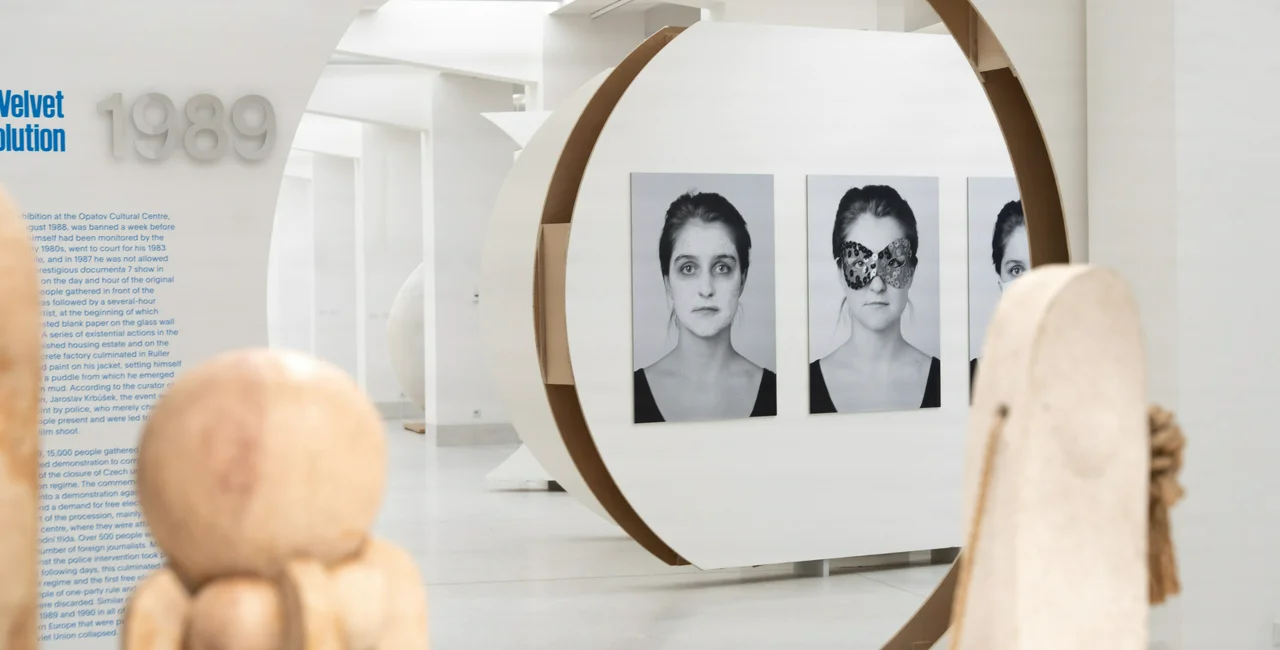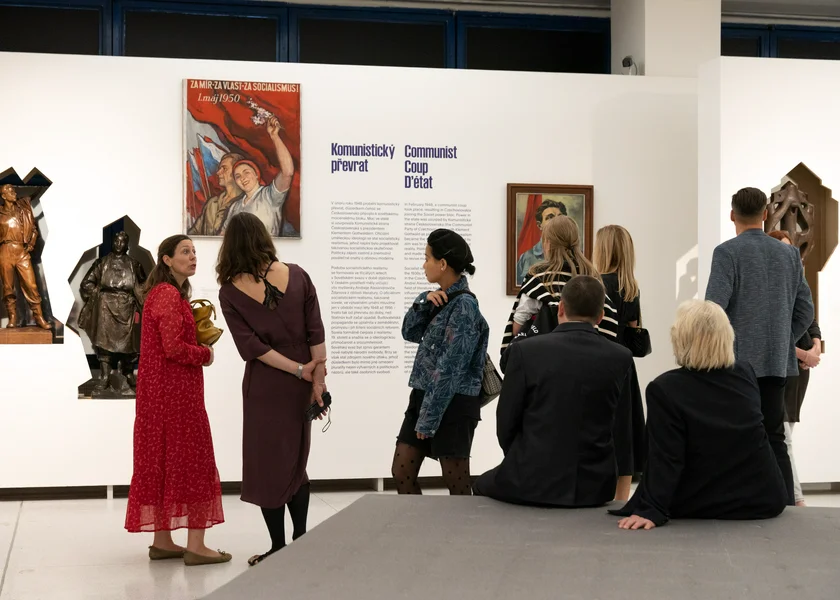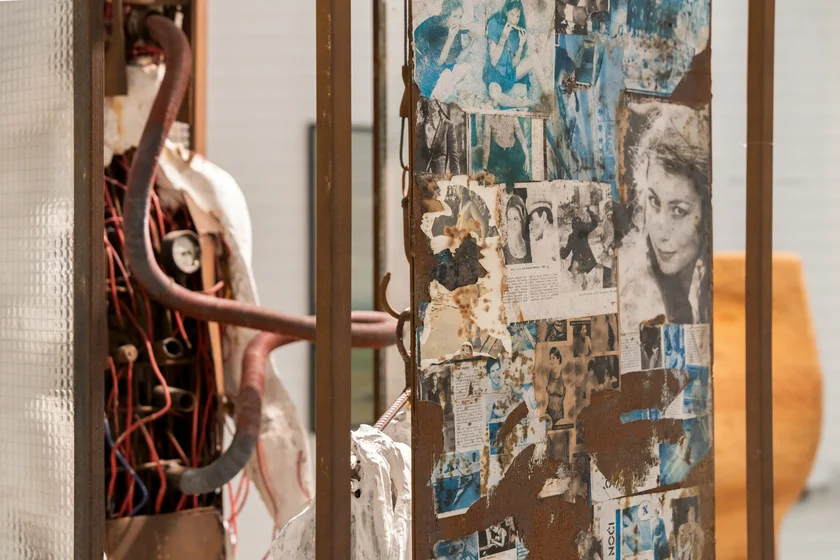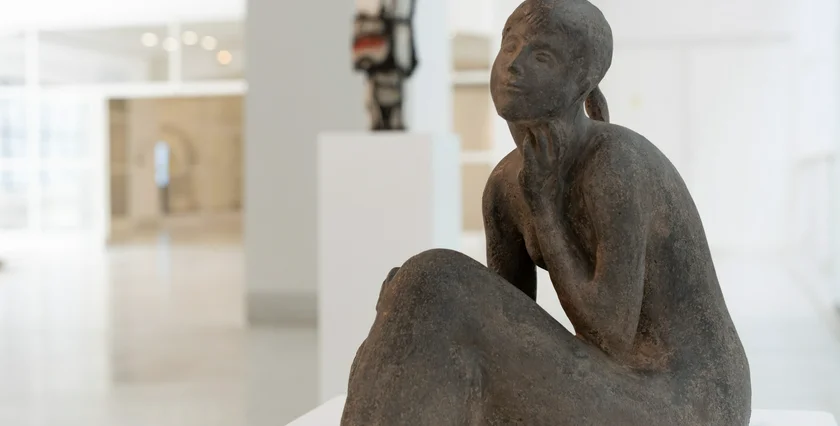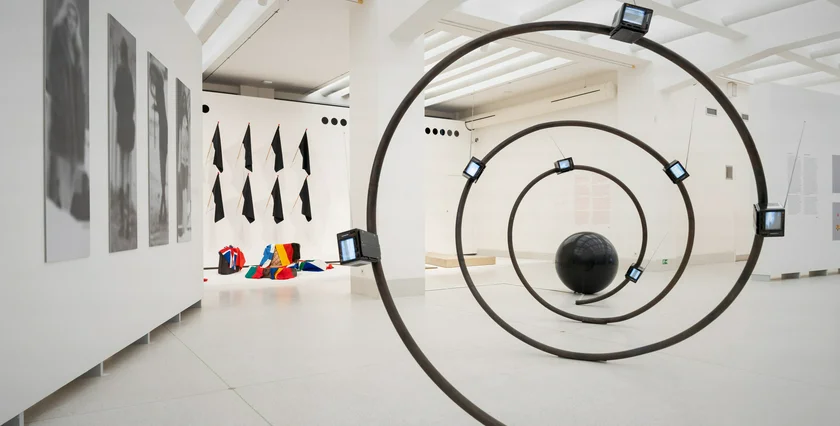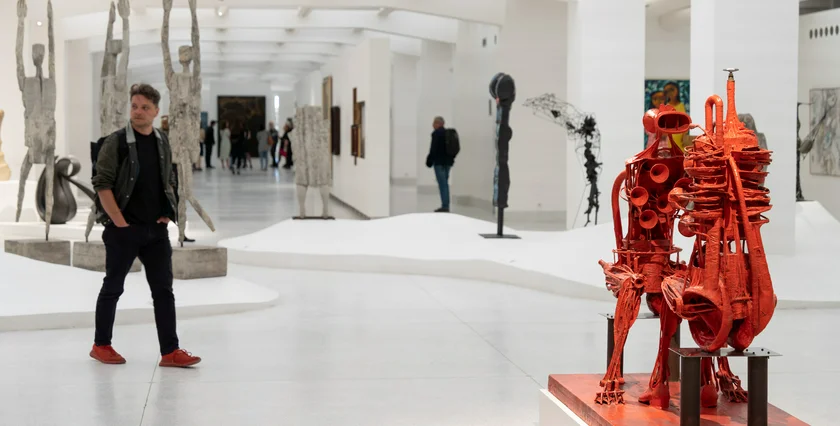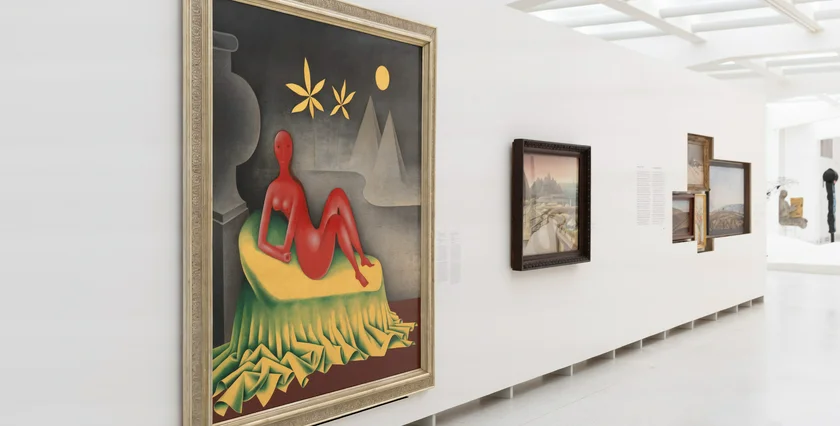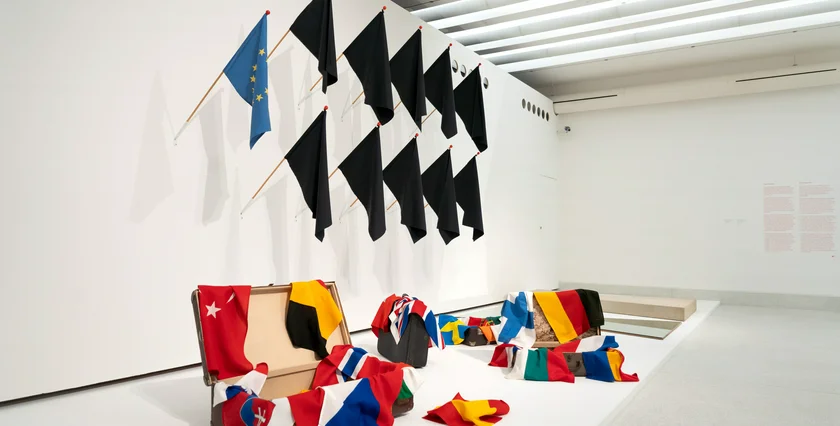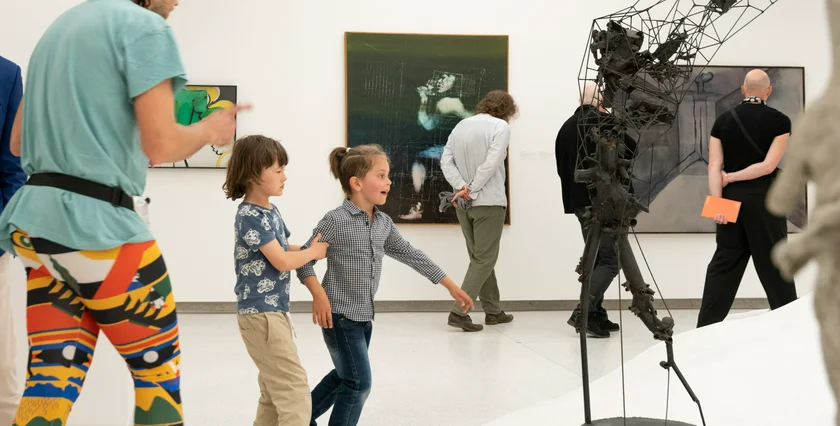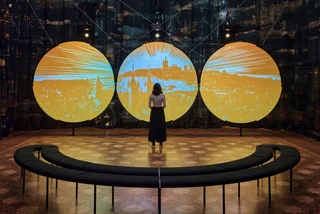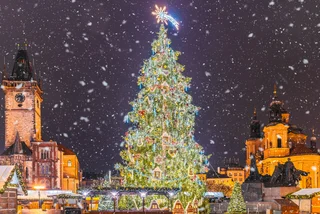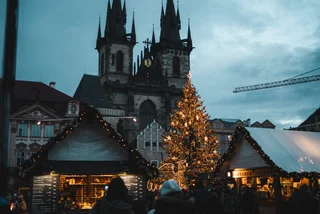In his samizdat 1978 essay “The Power of the Powerless,” the dissident playwright and Czechoslovak president-to-be Václav Havel lays out a sobering argument against the “hypnotic charm” of totalitarian ideology, the “low-rent home” for which one pays with the “abdication of one’s own reason, conscience, and responsibility.”
“In everyone, there is some willingness to merge with the anonymous crowd and to flow comfortably along with it down the river of pseudo-life,” Havel argues, a tendency that not only cleaves the individual in a battle between human and systemic identities but also challenges “the very notion of identity itself.”
In a new era of oppressive power structures and threats to reason, the exhibit takes a defiant stand against the convenience of narrative.
It was within a far less brutal political milieu but still very much in keeping with Havel’s legacy that the National Gallery’s Trade Fair Palace debuted its new permanent exhibition, 1939-2021: The End of the Black-and-White Era, last week.
Dazzlingly diverse and stubbornly resistant to definition, the show undertakes the herculean task of distilling eight turbulent decades down to a comprehensible collection of fewer than 400 works. Its aim, according to the exhibition’s curators, “is to emphasize in kaleidoscopic development the space between the basic polarities: official and unofficial, abstract and figurative, formal and engaged art.”
The End of the Black-and-White Era is the third permanent exhibition in a series of three “circuits” on view at the Trade Fair Palace, each of which guides museumgoers chronologically through a chapter in Czech and Central-European cultural history.
All of the artwork that appears in the latest circuit was drawn from the National Gallery’s existing collection; visitors are reminded that each piece is a testament to the political regime under which it was originally acquired (although the curators note that not every work in the exhibition was previously available for public viewing).
What results is an eighty-year cross-section of Czech and Slovak artistic, social, and political activity memorializing the uncertainties and anxieties to arise from the nation’s vertiginous evolution.
Among these strata are the work of artists who suffered at the hands of the hands of the state itself. Pavel Brázda, whose gilded “Large Astronaut” appears on many of the exhibition’s promotional materials, was denied public exhibition of his work until 1989 for being an outspoken opponent of communism.
Václav Stratil was born to a Catholic family and has borrowed heavily from Christian iconography; his graphic ink drawing “STIGMA” may be a nod to the marginalization endured by the religiously affiliated under the era of so-called “normalization.”
Journey through Czech history via NGP circuits
Art of the Long Century highlights regional masterworks from the 18th century until the birth of Czechoslovakia in 1918, alongside pieces from the NG’s French Collection.
The First Czechoslovak Republic includes international work purchased by the Republic in the 1920s and 30s.
1939-2021: The End of the Black-and-White Era is a testament to the political regime under which each piece was originally acquired.
Painter Míla Doleželová exhibited frequently throughout the 1950s and 1960s, but the subject of her focus during that time, Czechoslovakia's Roma minority, placed her in a category largely unto herself. Also noteworthy is the fact that Doleželová belongs to an exceptionally large group of female artists to be featured in the show.
Michael Novotný, director of the modern and contemporary art collection at the National Gallery Prague, concedes that the task of winnowing the work down to a digestible selection posed a significant challenge to the curatorial team.
“We didn't want to step back from the necessity of making the history be present as history, not just as art,” Novotný explained in an interview with Expats.cz. “Here, the art is really related to the history. It's not just an aesthetic phenomenon.”
Novotný noted that the chronological arrangement of the work is intended in part to facilitate the experience of foreigners, who may be unfamiliar with the political history of post-Munich Agreement Czechoslovakia.
In its many shades of gray, the exhibition skillfully eludes rhetoric and overt politicking. On this point, however, its curators echo Havel, arguing: “Among the greatest challenges we face is the need to transcend the contradiction between individual freedom and the interests of the community.”
With its dizzying heterogeneity, the exhibition suggests that whatever follows the “black-and-white era” will be more inclusive, more introspective, more inquisitive about the lives of the powerless, and, with any hope, more protective of reason, conscience, and responsibility.
The new permanent exhibit 1939-2021: The End of the Black-and-White Era is now on display at the National Gallery Prague's Trade Fair Palace.
This article was written in association with the National Gallery in Prague. Read more about our sponsored content policies here.












 Reading time: 4 minutes
Reading time: 4 minutes 